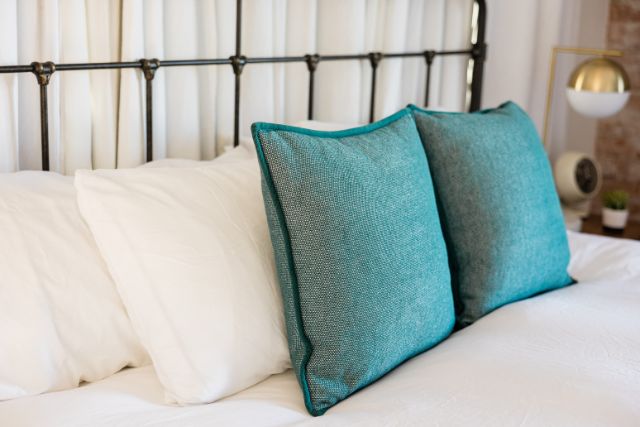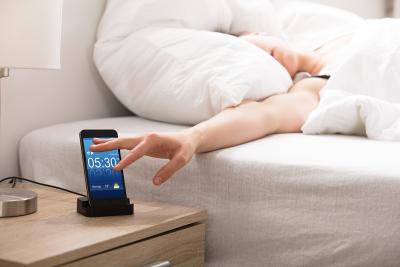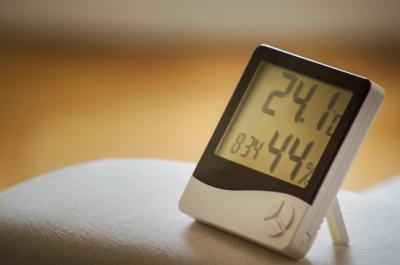Statement cushions have become a must-have item for any bedroom. Sometimes, we can't even get to bed because of all the excess cushions. They look great, but other than that, they don't have a purpose. We tend to toss them on the floor when we get in bed and pop them back on when we make the bed in the morning.
We've often thought it might be easier to sleep with the cushions there! We already sleep with two pillows, but this leaves us questioning how many pillows I should sleep with? And is it bad if I sleep with more?
It depends on which position you prefer to sleep in! Most people sleep with two pillows beneath their heads, but experts say this might not be the best for your body.

Why do we sleep on a pillow?
Let's first consider how our spine, neck and head are aligned. Our neck and head sit directly atop our spine when we walk around, but a pillow can keep your head fully aligned with your spine or push it sideways, depending on your sleep position. We know why certain positions and pillow firmness levels offer a better sleep, but back when pillows were invented this wasn't common knowledge.
It will come as no surprise that the pillow is a very old invention, though its original form probably isn't what you'd expect. The earliest recorded uses of pillows date back to Ancient Mesopotamia, around 7,000 BC. That's over 9,000 years ago, making them an incredibly old and beloved sleep accessory for humans to reduce aches and pains and avoid letting bugs crawl over their hair or face.
Unfortunately, you probably wouldn't like one of these original pillows from Mesopotamia or the later Ancient Egyptian pillows, as these were wooden or stone headrests that would elevate your head from the ground. The pillows we recognise today, with soft fillings such as feathers, were created by the Ancient Romans and Greeks. On the other side of the world, China also used their own version of pillows, most often made of ceramic.
So, how many pillows should you sleep with?
Sleeping positions vs. number of pillows
One major factor in deciphering how many pillows you should sleep with is your preferred position.

Side sleepers
The most common way that people sleep is on their side. It is recommended that side sleepers use two pillows - but before you get excited, they aren't both for beneath your head! Sleeping with one pillow beneath your head and one between your knees is recommended to align your spine and ensure you're getting the support you need. This is because the leg you place on top when you sleep on your side can pull your spine out of alignment, leading to issues with your lower back and hip in the future.
If you'd like to find out more about the benefits of sleeping with a pillow between your legs, then make sure to check out our blog where we explore all about this! Your pillow isn't the only thing to consider if you're a side sleeper – you'll also need to consider your mattress! Find out which mattress best suits you with our best mattresses for side sleepers guide.

Back sleepers
Sleeping on your back is proven to be the best way to sleep for supporting your spine as it keeps your spine aligned and reduces pressure on your chest. So, if you're doing that, well done! It is still recommended that you use one thin pillow beneath your head to maintain neck and spine health whilst sleeping in this position. Laying on your back may be the recommended way to sleep, yet people often say that laying flat on their back is painful for their lower back muscles.
Don't worry, though; we have a solution! Try putting a pillow beneath your knees to encourage your spine to stay aligned in its natural curvature; this should reduce any strain on your lower back. Make sure that your mattress is the right type for back sleepers as well – check out our guide on the best mattresses for back sleepers now!

Front sleepers
Sleeping on your front is the worst way to sleep for your health, as it promotes an incorrect spinal alignment as your torso is heavy enough to sink into the mattress, causing your back to arch. As such, this can cause back pain, affecting your shoulders and needing to turn your neck to breathe further, which causes issues.
In this position, avoid having a pillow beneath your head. If you need to, ensure it is a thin, soft pillow. Putting a thin pillow beneath your pelvis is also a good idea. This will help to align your spine. Get an even better sleep by investing in the perfect mattress to match your sleep position with our best mattresses for front sleepers guide.

What if you need two or more pillows?
We get used to sleeping in our way, and it becomes difficult to adjust, even when you're told that a different way may be better for your body. If you feel like you need that additional pillow, it could be because the pillow you're using isn't right.
Your pillow should support the curve of your neck completely. If it doesn't, why not try a memory foam pillow? These pillows feature innovative memory foam that uses your body heat to allow it to contour to your body throughout the night. This means that you get customised support for your neck and shoulders, giving you a fantastic night's sleep before returning to their original shape in the morning.













